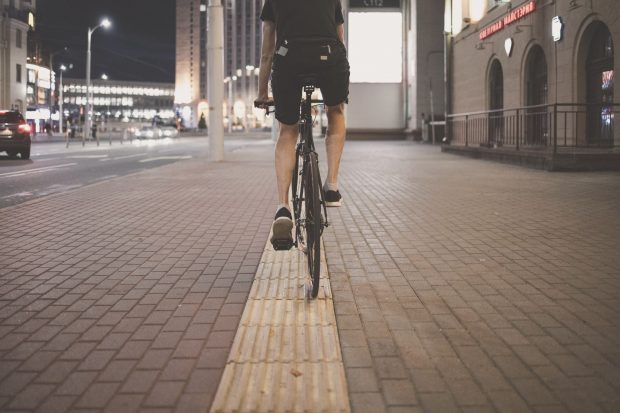Improve Your Endurance & Speed – Breathing Techniques for Bike Commuting
Cycling to work or around town is a great alternative to taking your car or public transport, especially as fuel prices soar. The one issue that many new cyclists face is that they don’t have the endurance to cycle for long and they need to build up to improve their speed, making their travels a little harder.

https://unsplash.com/photos/v53RV9LL5y0
There are several ways you can improve your endurance and speed. One way is to work on your breathing. By implementing proper breathing techniques, you can boost your overall performance on your bike. This goes for casual riders going to work or the shops and those who cycle for exercise and competitive reasons.
Different Breathing Techniques
You’ll often hear about boosting your lung capacity to improve your endurance. However, you can’t physically increase the size of your lungs. Lung size is based on factors like your gender, height, and general genetics. A taller man is generally going to have bigger lungs than a shorter woman. Additionally, the older you get, the smaller your lungs become.
What you can do is improve how your body uses your lung capacity, and you can do this by using these techniques:
1.Intercostal Diaphragmatic Breathing
This is the type of breathing that is taught to actors and singers to help them sustain phrases and sentences when performing. It’s exactly what it sounds like—breathing using the diaphragm to ensure that the full lung inflates with each inhale and deflates with each exhale. When breathing, your stomach will move in and out to make room for the lungs to expand and deflate.
The benefit of this type of breathing is that you’re more in control of the amount of oxygen that you’re getting into your system. It will also slow your heart rate as your blood pumps in a similar pattern and rhythm to your breath. This is the type of breathing you should use when pedaling harder on an incline.
2. Performance Synchronized Breathing
With this type of breathing, you match your inhales and exhales to your movements. The best way to do this is to count your pedal strokes and breathe in and out for a set number of strokes. The idea is to regulate your breathing and prevent you from hyperventilating and raising your heart rate too much, especially on harder terrain or steep inclines.
The best starting point is to go with 3 strokes for your inhale and 6 strokes for your exhale. By making your exhale longer than your inhale, you force your body to slow your heart rate. You can play around to find a rhythm that works for you and the terrain you’re riding on, but always try to keep the exhale count higher than your inhale count. The harder you’re working, the harder it’ll be to keep this balance, but with practice, you can get there.
3. Altitude Synchronized Breathing
If you really want to up your game and build your endurance, then this is the breathing technique to master. It’s quite similar to technique two on this list, but it adds in a count where you hold your breath. This inclusion mimics what it would be like to train at an altitude of 2 000 meters or more above sea level.
This technique works with the rhythm of your pedal strokes and matches them to the counts for your breath. You want to breathe deeply, so go with as high a count as you can handle. You can work your way up to higher counts as you build your endurance.
Start with two strokes for your inhale, two strokes to hold your breath, and then exhale for four strokes. The pattern should stay the same for your inhale and your hold, then double that count for your exhale.

https://unsplash.com/photos/DvaiuYRpxmE
Other Tips For Improving Your Breathing While Cycling
To improve your breathing while cycling, you can also try some of these tips:
1.Practice While Off Your Bike
If diaphragmatic breathing is new to you, it can take a bit of conscious effort to get it right. You may also find that you get a bit lightheaded when you first start using synchronized breathing techniques. With this in mind, it’s good to try practicing these techniques standing with both feet on the ground. Start practicing the techniques while standing still, and then while walking. You can use your footsteps in your counting.
2. Adjust Your Bike Position
Plenty of cyclists prefer to sit forward over their handlebars as it gives them a more streamlined position to go faster. However, this can compress your chest and make it hard for your diaphragm to move. It’s incredibly difficult to fill your lungs to capacity and slow your breathing when your chest is compressed.
Try playing around with the height of your seat and your handlebars to get the best position for your back. If you aren’t going for speed and simply want to get from point A to point B, there’s no need for you to be bent forward over the handlebars. A more upright position is one of the ways that you can enjoy a much better, more comfortable commute.
3. Work On Your Core Muscles
The final step is to strengthen your core muscles. The stronger your abdomen, the easier it is to control your diaphragm and breathing. You’ll find that you put less pressure on your arms and chest going down to your handlebars if your abdominal muscles are supporting your body rather than your arms. It’ll make breathing easier, as well as improve your endurance.
Wrapping Up
Breathing techniques are the key to building endurance for commuting. They take time and practice, but any cyclist will tell you, they’re well worth the effort.
